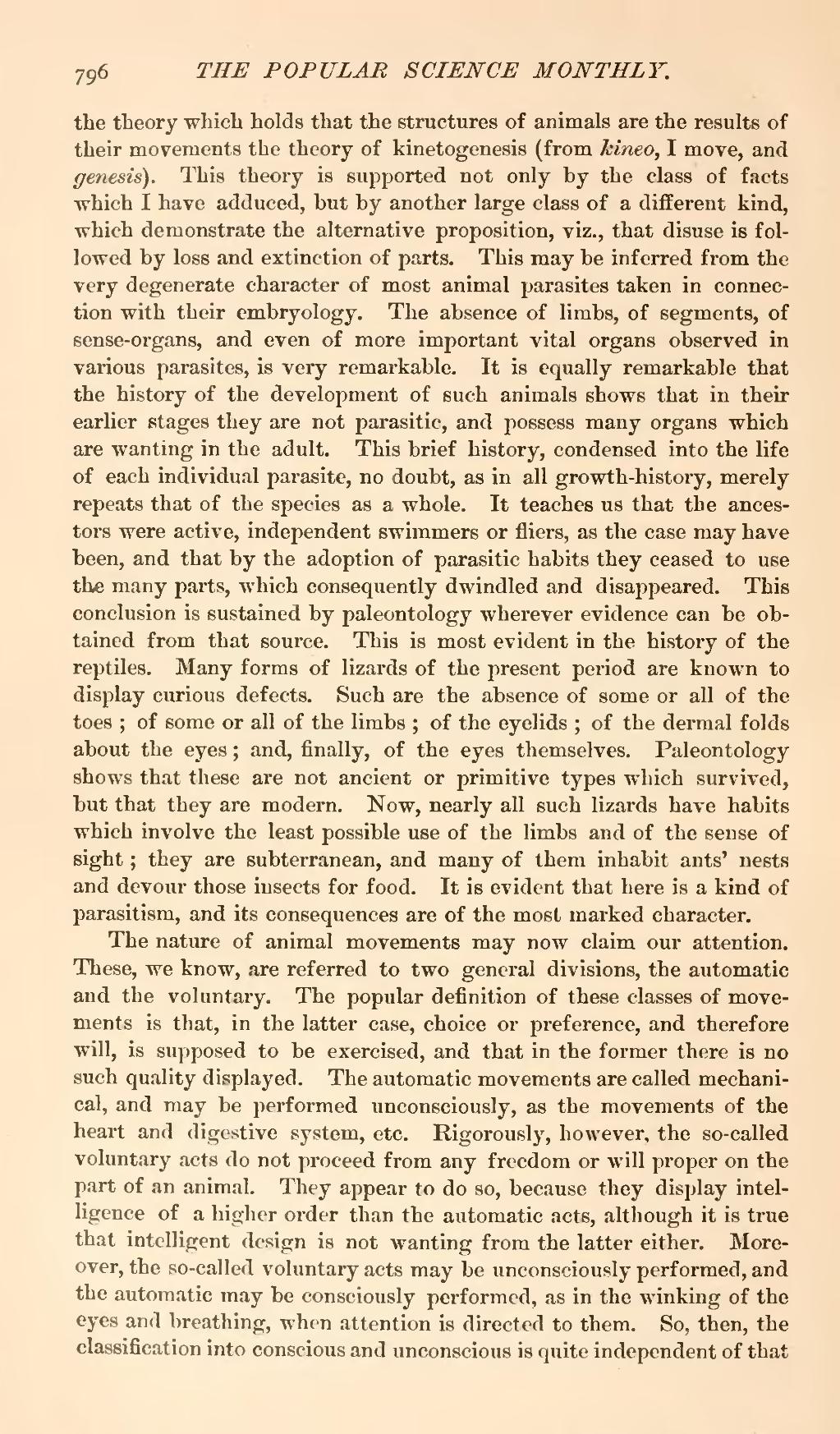the theory which holds that the structures of animals are the results of their movements the theory of kinetogenesis (from kineo, I move, and genesis). This theory is supported not only by the class of facts which I have adduced, but by another large class of a different kind, which demonstrate the alternative proposition, viz., that disuse is followed by loss and extinction of parts. This may be inferred from the very degenerate character of most animal parasites taken in connection with their embryology. The absence of limbs, of segments, of sense-organs, and even of more important vital organs observed in various parasites, is very remarkable. It is equally remarkable that the history of the development of such animals shows that in their earlier stages they are not parasitic, and possess many organs which are wanting in the adult. This brief history, condensed into the life of each individual parasite, no doubt, as in all growth-history, merely repeats that of the species as a whole. It teaches us that the ancestors were active, independent swimmers or fliers, as the case may have been, and that by the adoption of parasitic habits they ceased to use the many parts, which consequently dwindled and disappeared. This conclusion is sustained by paleontology wherever evidence can be obtained from that source. This is most evident in the history of the reptiles. Many forms of lizards of the present period are known to display curious defects. Such are the absence of some or all of the toes; of some or all of the limbs; of the eyelids; of the dermal folds about the eyes; and, finally, of the eyes themselves. Paleontology shows that these are not ancient or primitive types which survived, but that they are modern. Now, nearly all such lizards have habits which involve the least possible use of the limbs and of the sense of sight; they are subterranean, and many of them inhabit ants' nests and devour those insects for food. It is evident that here is a kind of parasitism, and its consequences are of the most marked character.
The nature of animal movements may now claim our attention. These, we know, are referred to two general divisions, the automatic and the voluntary. The popular definition of these classes of movements is that, in the latter case, choice or preference, and therefore will, is supposed to be exercised, and that in the former there is no such quality displayed. The automatic movements are called mechanical, and may be performed unconsciously, as the movements of the heart and digestive system, etc. Rigorously, however, the so-called voluntary acts do not proceed from any freedom or will proper on the part of an animal. They appear to do so, because they display intelligence of a higher order than the automatic acts, although it is true that intelligent design is not wanting from the latter either. Moreover, the so-called voluntary acts may be unconsciously performed, and the automatic may be consciously performed, as in the winking of the eyes and breathing, when attention is directed to them. So, then, the classification into conscious and unconscious is quite independent of that
